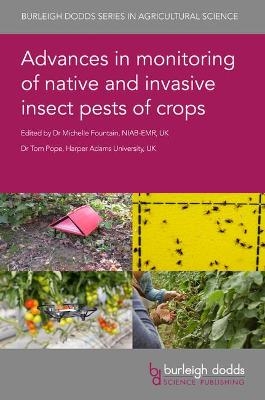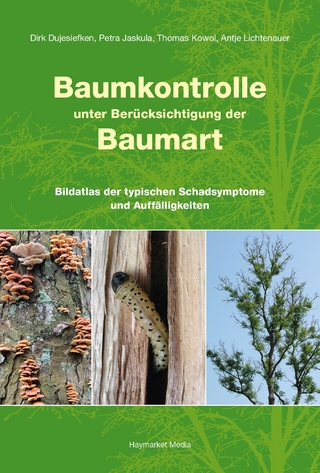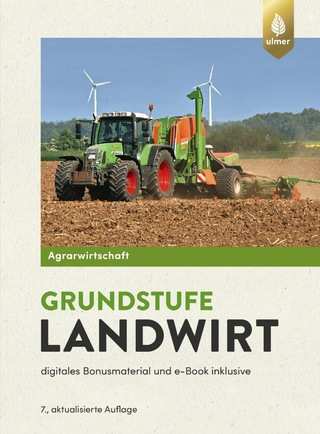
Advances in Monitoring of Native and Invasive Insect Pests of Crops
Burleigh Dodds Science Publishing Limited (Verlag)
978-1-80146-107-8 (ISBN)
Insect pests remain a major threat to crop production primarily because of their ability to inflict severe damage on crop yields, as well as their role as key vectors of disease. Early identification of pests is critical to the success of integrated pest management (IPM) programmes and essential for the development of phytosanitary/quarantine regimes to prevent the introduction of invasive insect pests to new environments.
Advances in monitoring of native and invasive insect pests of crops reviews the wealth of research on techniques to monitor and thus prevent threats from both native and invasive insect pests. The book considers recent advances in areas such as sampling, identifying and modelling pest populations.
With its considered approach, the book explores current best practices for the detection, identification and modelling of native and invasive insect pests of crops. The contributors offer farmers informed advice on how to mitigate a growing problem which has been exacerbated as a result of climate change.
Dr Michelle Fountain is Head of Pest and Pathogen Ecology at the world-famous NIAB East Malling (formerly East Malling Research), UK. She is internationally renowned for her research on integrated insect pest management (IPM) and insect pollination in fruit horticulture. Dr Fountain is co-editor of Integrated management of diseases and pests of tree fruit, published by Burleigh Dodds Science Publishing in 2019. Dr Tom Pope is Reader in Entomology and Integrated Pest Management at Harper Adams University, a leading agricultural university in the UK. A fellow of the Royal Entomological Society, Dr Pope is a globally recognised expert in tracking and understanding the behaviour of insect and other pests as well as in the design and implementation of IPM programmes. Dr. William (Bill) Hutchison is a Professor and Extension Entomologist at the University of Minnesota, St. Paul, USA. His expertise is applied insect population ecology, as it relates to the development of innovative Integrated Pest Management (IPM) programs for a variety of fruit and vegetable crops. He has also been active in evaluating the long-term sustainability of insect-resistant, genetically engineered (GE) maize, and implementing GE crops into IPM programs. He is also active in international IPM research, with a current US-AID project in East Africa. Dr Alistair Drake is a retired entomologist who holds honorary positions with The University of New South Wales and the Institute for Applied Ecology at the University of Canberra. His research interests include the development of radar techniques for insect observation, their application to pest forecasting, aeroecology (especially of insects), and more general aspects of animal migration and applied ecology. He has co-authored a monograph on radar entomology and co-edited a multiauthor book on insect migration. Dr Alan MacLeod works in the United Kingdom for the Department for Environment, Food and Rural Affairs. Alan was chair of the International Advisory Group on Pest Risk Analysis, providing technical support to the International Plant Protection Convention and has a strong interest in PRA training and has worked with the IPPC and international colleagues to deliver PRA training to support countries in Asia and Africa. Alan has published over 100 scientific papers and guest edited journal special issues focussed on plant health and biosecurity.
Part 1 Detection
1. Advances in techniques for trapping crop insect pests: Archie K. Murchie, Agri-Food & Biosciences Institute, UK;
2. Advances and challenges in monitoring insect pests of major field crops in the United States: Erin W. Hodgson and Ashley N. Dean, Iowa State University, USA; Anders Huseth, North Carolina State University, USA; and William D. Hutchison, University of Minnesota, USA;
3. Quantifying captures from insect pest trap networks: Nicholas C. Manoukis, USDA-ARS, USA;
4. Developments in crop insect pest detection techniques: Richard W. Mankin, USDA-ARS, USA;
5. Monitoring airborne movement of crop insect pests and beneficials: V. Alistair Drake, University of Canberra and University of New South Wales, Australia;
Part 2 Identification, modelling and risk assessment
6. Advances in image-based identification and analysis of crop insect pests: Daniel Guyer, Michigan State University, USA; and Charles Whitfield, NIAB, UK;
7. Advances in insect pest monitoring using pest population growth and geospatial data for pest risk assessment: Michael J. Brewer, Texas A&M AgriLife Research, USA; Isaac L. Esquivel, North Florida Research and Education Center, University of Florida, USA; and John W.Gordy, Syngenta Crop Protection, USA;
8. Advances in pest risk assessment techniques focusing on invertebrate pests of European outdoor crops: Mark W. Ramsden, Samuel Telling, Daniel J. Leybourne, Natasha Alonso and Sacha White, RSK ADAS Ltd, UK; and Nikos Georgantzis, Burgundy School of Business, France;
Part 3 Invasive species
9. Assessing the potential economic impact of invasive plant pests: Monique Mourits and Alfons Oude Lansink, Wageningen University, The Netherlands;
10. Developing effective phytosanitary measures to prevent the introduction of invasive insect pests: Alan MacLeod and Dominic Eyre, DEFRA, UK;
11. Mitigating invasive insect species: eradication, long-term management, and the importance of sampling and monitoring: Amy Morey, University of Minnesota, USA; and Robert Venette, USDA Forest Service, USA;
| Erscheinungsdatum | 04.10.2021 |
|---|---|
| Reihe/Serie | Burleigh Dodds Series in Agricultural Science ; 128 |
| Co-Autor | Dr Archie K. Murchie, Dr Erin W. Hodgson, Dr Ashley N. Dean |
| Zusatzinfo | Color tables, photos and figures |
| Verlagsort | Cambridge |
| Sprache | englisch |
| Maße | 152 x 229 mm |
| Themenwelt | Weitere Fachgebiete ► Land- / Forstwirtschaft / Fischerei |
| ISBN-10 | 1-80146-107-4 / 1801461074 |
| ISBN-13 | 978-1-80146-107-8 / 9781801461078 |
| Zustand | Neuware |
| Informationen gemäß Produktsicherheitsverordnung (GPSR) | |
| Haben Sie eine Frage zum Produkt? |
aus dem Bereich


